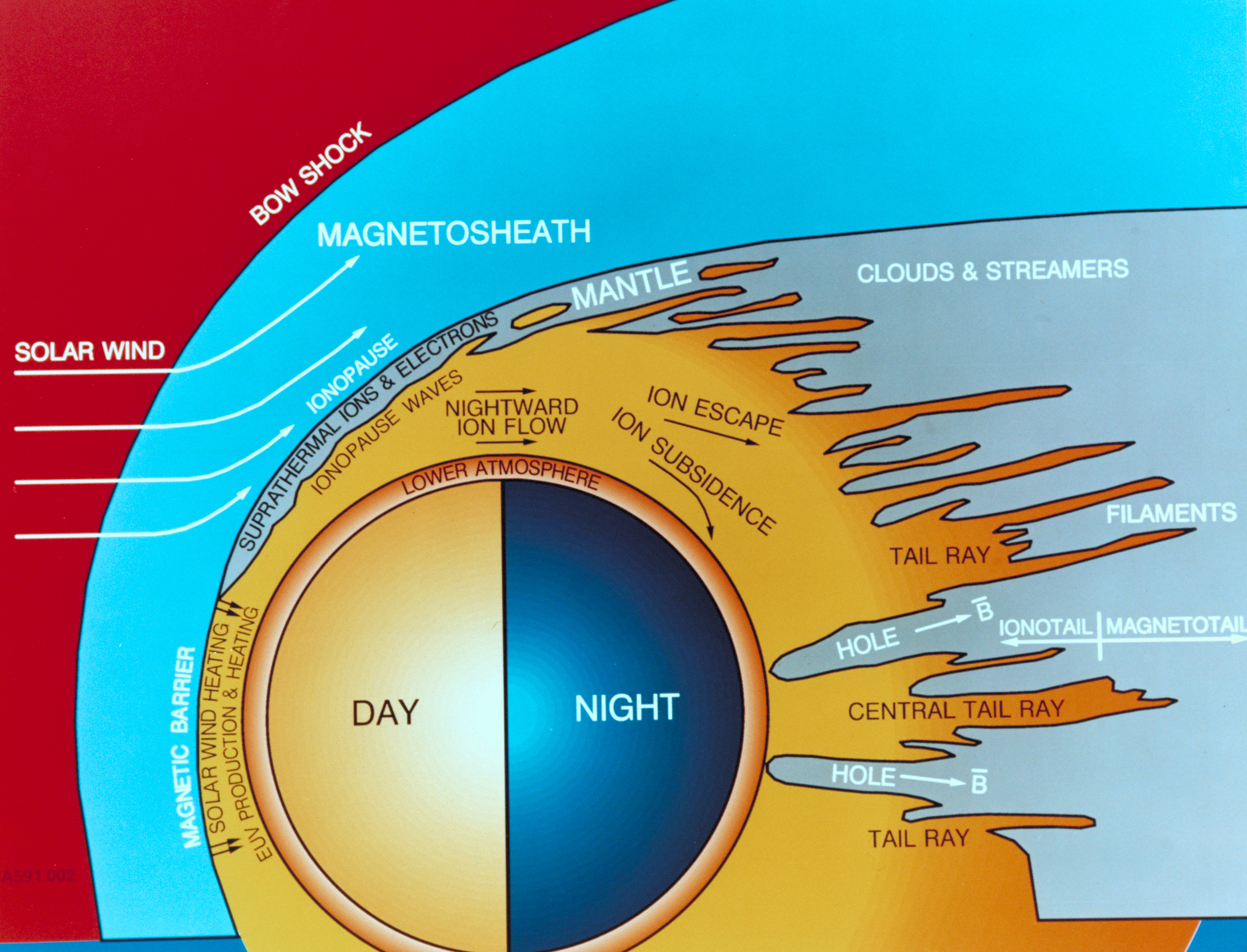40 Years Ago, Pioneer Venus Multiprobe Launched to Study the Cloud-Shrouded Planet Venus - NASA (original) (raw)

NASA
Aug 08, 2018
On August 8, 1978, the Pioneer Venus Multiprobe spacecraft launched to study Venus, a planet that has an atmosphere 100 times denser than Earth’s atmosphere and is hotter than the melting point of zinc and lead. Pioneer Venus Multiprobe was composed of five components: the main spacecraft, the large probe and three identical small probes named North, Day and Night. Built by the Hughes Company in El Segundo, California, and launched on an Atlas-Centaur rocket from Cape Canaveral Air Force Station in Florida, the Pioneer Venus Multiprobe project was managed by NASA’s Ames Research Center in California’s Silicon Valley.
Carrying seven experiments and fitted with a parachute to slow its descent into the atmosphere, the large probe studied the composition of Venus’ atmosphere and clouds. In addition, the large probe measured the distribution of infrared and solar radiation. The three small probes were designed without parachutes, each carrying six experiments. Each probe targeted different parts of Venus. North entered Venus at the high northern latitudes, Night targeted the night side at mid-southern latitudes, and Day targeted the day side at mid-southern latitudes. The main spacecraft carried an additional two experiments designed to study Venus’ upper atmosphere. The five probes collected detailed information about atmospheric composition, circulation and energy balance.
The large probe separated from the main spacecraft 123 days after launch, on November 16, followed by the small probes on November 20, reaching and entering Venus’ atmosphere December 9. While not expected to survive their fiery descent into the dense Venusian atmosphere, all four of the probes transmitted data down to the surface with the Day probe transmitting from the surface for over an hour.
Illustration of Pioneer Venus Multiprobe approaching Venus.
Image credit: NASA/ Paul Hudson
